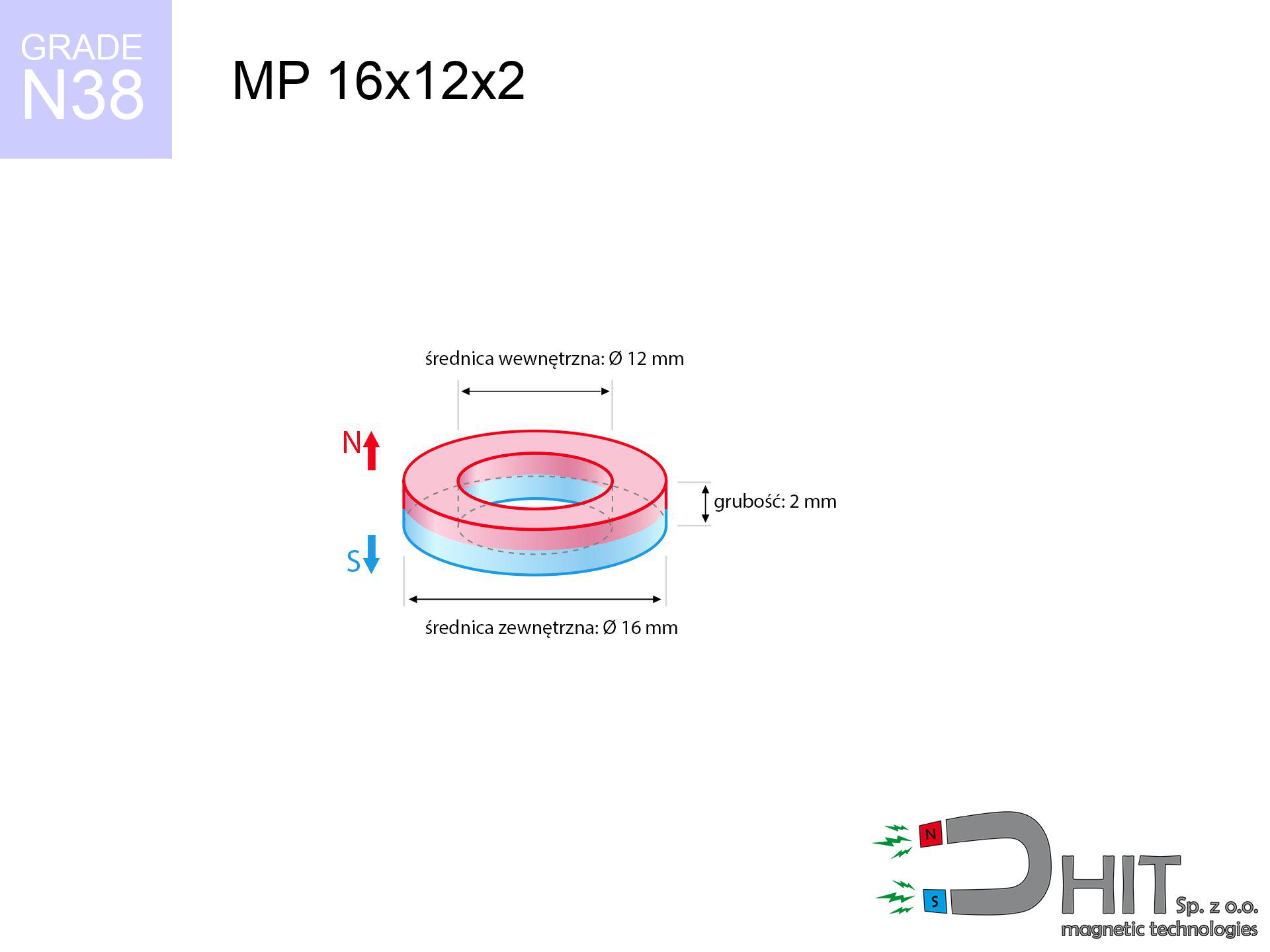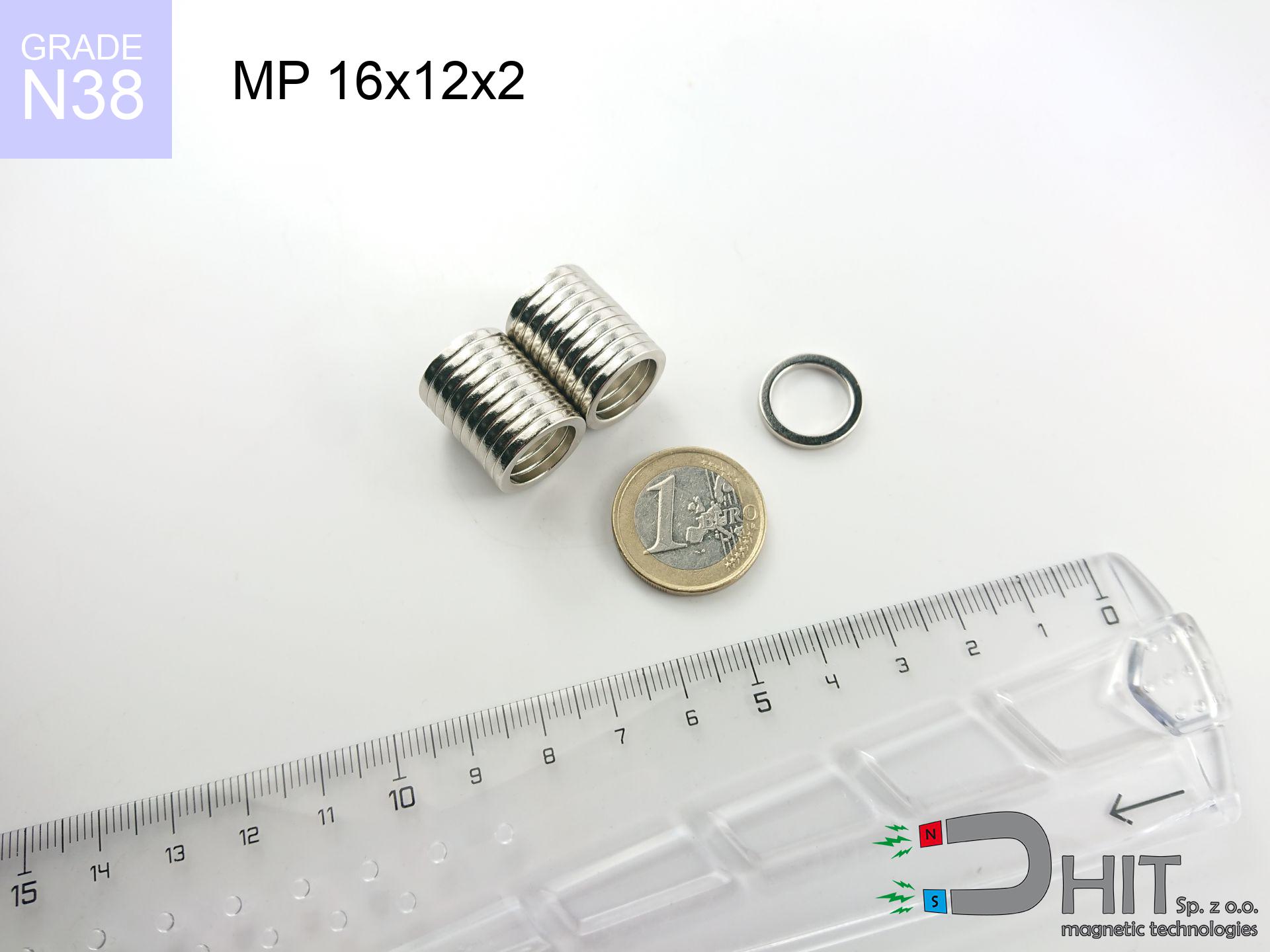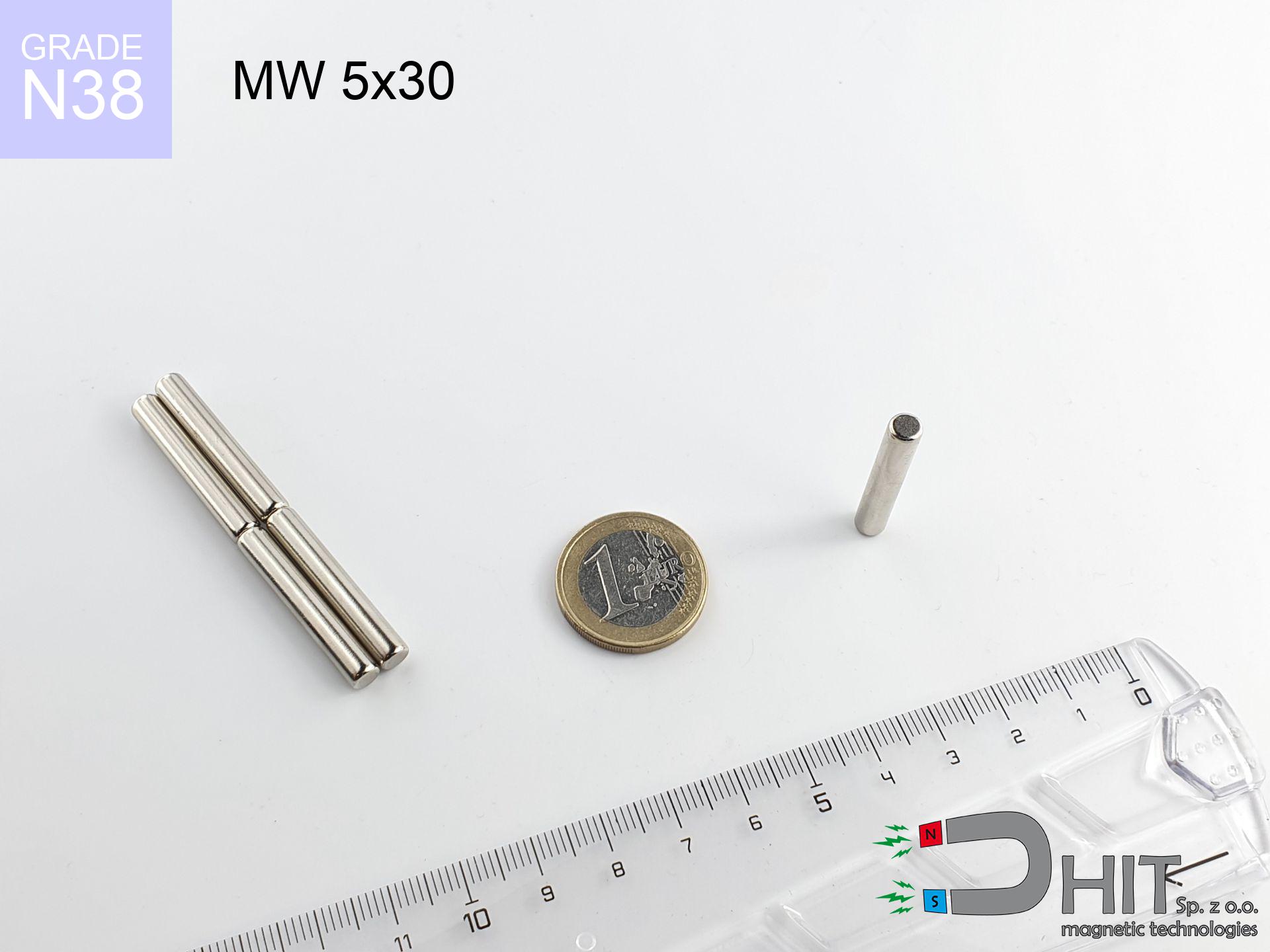MP 16x12x2 / N38 - neodymium magnet
ring magnet
catalog number 030183
GTIN: 5906301812005
external diameter Ø
16
mm [±0,1 mm]
internal diameter Ø
12
mm [±0,1 mm]
height
2
mm [±0,1 mm]
magnetizing direction
↑ axial
capacity ~
1.37 kg / 13.44 N
magnetic induction ~
45.64 mT / 456 Gs
max. temperature
≤ 80
°C
catalog number 030183
GTIN: 5906301812005
external diameter Ø
16 mm [±0,1 mm]
internal diameter Ø
12 mm [±0,1 mm]
height
2 mm [±0,1 mm]
magnetizing direction
↑ axial
capacity ~
1.37 kg / 13.44 N
magnetic induction ~
45.64 mT / 456 Gs
max. temperature
≤ 80 °C
1.30 ZŁ gross price (including VAT) / pcs +
1.06 ZŁ net price + 23% VAT / pcs
bulk discounts:
need more quantity?Don't know what to choose?
Give us a call tel: +48 22 499 98 98 or get in touch via form on the contact page. You can check the power as well as the appearance of neodymium magnets in our magnetic calculator magnetic calculator
Orders placed by 2:00 PM will be shipped on the same business day.
Specification: ring magnet 16x12x2 / N38 ↑ axial
Magnetic properties of the material N38
Physical properties of sintered neodymium magnets Nd2Fe14B
Choose recommended products
Advantages and disadvantages of neodymium magnets NdFeB.
Apart from immense strength, neodymium magnets have the following advantages:
- They do not lose power over time. After approximately 10 years, their strength decreases by only ~1% (theoretically),
- They protect against demagnetization caused by external magnetic sources extremely well,
- Thanks to the shiny finish and nickel, gold, or silver coating, they have an aesthetic appearance,
- They have very high magnetic induction on the surface of the magnet,
- By using an appropriate combination of materials, they can achieve high thermal resistance, allowing them to operate at temperatures up to 230°C and above...
- Thanks to the flexibility in shaping and the ability to adapt to specific requirements – neodymium magnets can be produced in many variants of shapes and sizes, which amplifies their universality in usage.
- Significant importance in modern technologies – are utilized in HDD drives, electric drive mechanisms, medical equipment or very highly developed apparatuses.
Disadvantages of neodymium magnets:
- They are fragile when subjected to a strong impact. If the magnets are exposed to impacts, we recommend using magnets in a metal holder. The steel housing in the form of a holder protects the magnet from impacts, and at the same time increases its overall strength,
- They lose strength at high temperatures. Most neodymium magnets experience permanent loss of strength when heated above 80°C (depending on the form and height). However, we also offer special magnets with high temperature resistance, up to 230°C,
- They rust in a humid environment. For outdoor use, we recommend using waterproof magnets, such as those made of rubber or plastic,
- The use of a cover - a magnetic holder is recommended due to the limited production capabilities of creating threads or complex shapes in the magnet
- Possible danger arising from small pieces of magnets can be dangerous, if swallowed, which is crucial in the aspect of protecting young children. Furthermore, tiny parts of these products can be problematic in medical diagnosis when they are in the body.
Handle Neodymium Magnets with Caution
Neodymium magnets can demagnetize at high temperatures.
Under specific conditions, Neodymium magnets can lose their magnetism when subjected to high temperatures.
The magnet is coated with nickel - be careful if you have an allergy.
Studies clearly indicate a small percentage of people who suffer from metal allergies such as nickel. An allergic reaction often manifests as skin redness and rash. If you have a nickel allergy, try wearing gloves or avoid direct contact with nickel-plated neodymium magnets.
It is essential to keep neodymium magnets out of reach from children.
Remember that neodymium magnets are not toys. Do not allow children to play with them. In the case of swallowing multiple magnets simultaneously, they can attract to each other through the intestinal walls. In the worst case scenario, this can lead to death.
Neodymium magnets are not recommended for people with pacemakers.
Neodymium magnets produce strong magnetic fields that can interfere with the operation of a heart pacemaker. However, if the magnetic field does not affect the device, it can damage its components or deactivate the device when it is in a magnetic field.
Neodymium magnets are primarily characterized by their significant internal force. They attract to each other, and any object that comes in their way will be affected.
Neodymium magnets jump and also clash mutually within a distance of several to almost 10 cm from each other.
Neodymium magnets are the strongest, most remarkable magnets on earth, and the surprising force between them can shock you at first.
Make sure to review all the information we have provided. This will help you avoid harm to your body and damage to the magnets.
Dust and powder from neodymium magnets are flammable.
Avoid drilling or mechanical processing of neodymium magnets. Once crushed into fine powder or dust, this material becomes highly flammable.
Never bring neodymium magnets close to a phone and GPS.
Neodymium magnets generate strong magnetic fields that interfere with magnetometers and compasses used in navigation, as well as internal compasses of smartphones and GPS devices.
Neodymium magnetic are especially delicate, resulting in their breakage.
In the event of a collision between two neodymium magnets, it can result in them getting chipped. Despite being made of metal and coated with a shiny nickel plating, they are not as hard as steel. At the moment of connection between the magnets, small sharp metal fragments can be propelled in various directions at high speed. Eye protection is recommended.
You should keep neodymium magnets at a safe distance from the wallet, computer, and TV.
Magnetic fields generated by neodymium magnets can damage magnetic storage media such as floppy disks, credit cards, magnetic ID cards, cassette tapes, video tapes, or other similar devices. They can also damage televisions, VCRs, computer monitors, and CRT displays. You should especially avoid placing neodymium magnets near electronic devices.
So that know how powerful neodymium magnets are and why they are so dangerous, see the article - Dangerous powerful neodymium magnets.



![magnetic separator 25x175 [2xM8] / N52 magnetic separator 25x175 [2xM8] / N52](https://cdn3.dhit.pl/graphics/products/sm-25x175-2xm8-gif.jpg)
![magnetic separator 18x150 [2xM5] / N42 magnetic separator 18x150 [2xM5] / N42](https://cdn3.dhit.pl/graphics/products/sm-18x150-2xm5-pec.jpg)
![search holder 75x25 [M10x3] GW F200 PLATINIUM / N52 search holder 75x25 [M10x3] GW F200 PLATINIUM / N52](https://cdn3.dhit.pl/graphics/products/ump-75x25-m10x3-gw-f200-platinium-tav.jpg)


